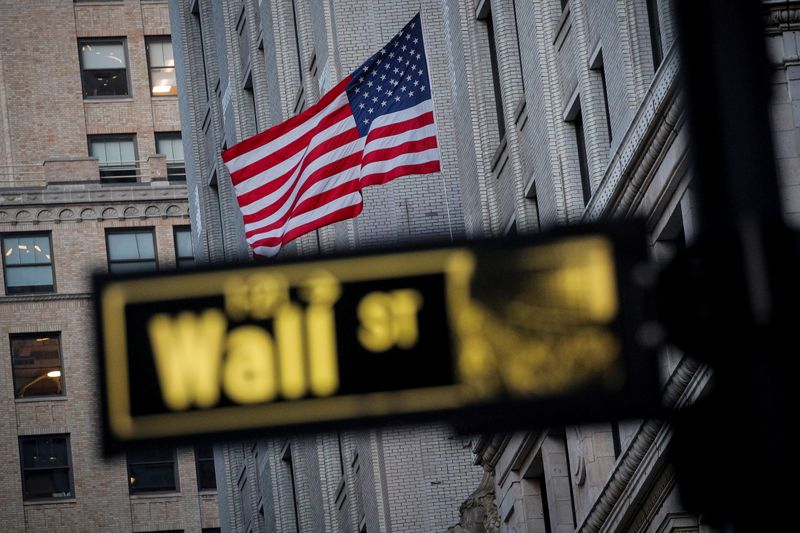By Lewis Krauskopf and Saqib Iqbal Ahmed
NEW YORK (Reuters) -A rally in which U.S. stocks have doubled from post-pandemic lows is about to enter the year’s worst month for equities, as investors focus on a nationwide COVID-19 resurgence and how quickly the Federal Reserve plans to pull back on its easy money policies.
September has been the worst month of the year for the S&P 500, with the benchmark index falling an average of 0.56% since 1945, according to Sam Stovall, chief investment strategist at CFRA. The S&P has advanced only 45% of the time in September, the lowest rate of any month, CFRA’s data showed.
This time around, stocks have momentum on their side. The S&P 500 notched its 52nd record closing high of the year on Friday and has gained 20% so far in 2021, having gone 287 calendar days without a pullback of 5% or more.
That type of performance has signaled comparatively strong returns in the past. The index has gone on to deliver a median gain of 5.2% for the rest of the year during years when it made 30 or more new highs through August, according to data from LPL Financial (NASDAQ:LPLA). That compares with a median gain of 3.6% for all years, the firm's data showed.
A speech by Fed Chair Jerome Powell on Friday helped allay concerns that the central bank will pull back too soon on the $120 billion in monthly government bond buying that has helped buoy markets, pushing the S&P to fresh records.
Still, signs of caution have been growing in some corners of the market, fueled in part by rising coronavirus cases across the country and uncertainty over how quickly the Fed will tighten monetary policy once it begins its taper.
With worries over the Delta variant looming, "to continue to question the rally because of seasonality makes sense," said JJ Kinahan, chief market strategist at TD Ameritrade.
While major indexes stand near fresh highs, many stocks have been left behind. Tuesday marked the first time in nearly seven years that the S&P 500 hit a closing high while a 10-day total showed more stocks on the New York Stock Exchange and Nasdaq making 52-week lows than making 52-week highs, according to Willie Delwiche, an investment strategist with market research firm All Star Charts.
Investors have also been cutting back on leverage, with margin debt dropping 4.3% to $844 billion in July even as the S&P advanced more than 2%, according to data from BofA Global Research. The S&P 500 has been lower 71% of the time one year after a peak in margin debt has been reached, the bank’s analysis showed.
Net leverage among hedge funds, meanwhile, stood at 50% at the start of the third quarter compared with 58% late last year, according to a Goldman Sachs (NYSE:GS) report.
Though the market’s year-to-date gains have been spectacular, investors have questioned how much juice remains in the rally. A Reuters poll this week showed strategists believe the S&P 500 is likely to end 2021 not far from its current level.
A window into how the Delta variant has rippled through the economy will come next Friday, with the release of the U.S. jobs report for August, following recent weak readings on consumer sentiment and retail sales. The seven-day average of new reported cases reached about 155,000, the highest in about seven months, Reuters data through Thursday showed.
"When I sift through the noise ... that’s what the market is focusing on right now, plain and simple,” said Jack Janasiewicz, portfolio manager at Natixis Investment Managers Solutions.
Still, there is plenty of support for the view that equities are likely to continue grinding higher into the end of the year.
BofA Securities said buybacks from corporate clients last week hit their highest level since mid-March, a potential source of support for stocks. Those were led by financials, which notched their highest weekly buybacks since 2010, BofA wrote.

“Despite the tangible Covid variant spike, we think the economy will continue to chug along," boosted by corporate and consumer spending, said Rick Rieder, BlackRock’s chief investment officer of global fixed income, in a note to investors on Friday.
Some investors remain ready to jump on any downswings brought on by higher volatility in the coming weeks. "If we do see a pullback in September, I would definitely be telling our clients, 'take this as a buying opportunity,'" said Janasiewicz.